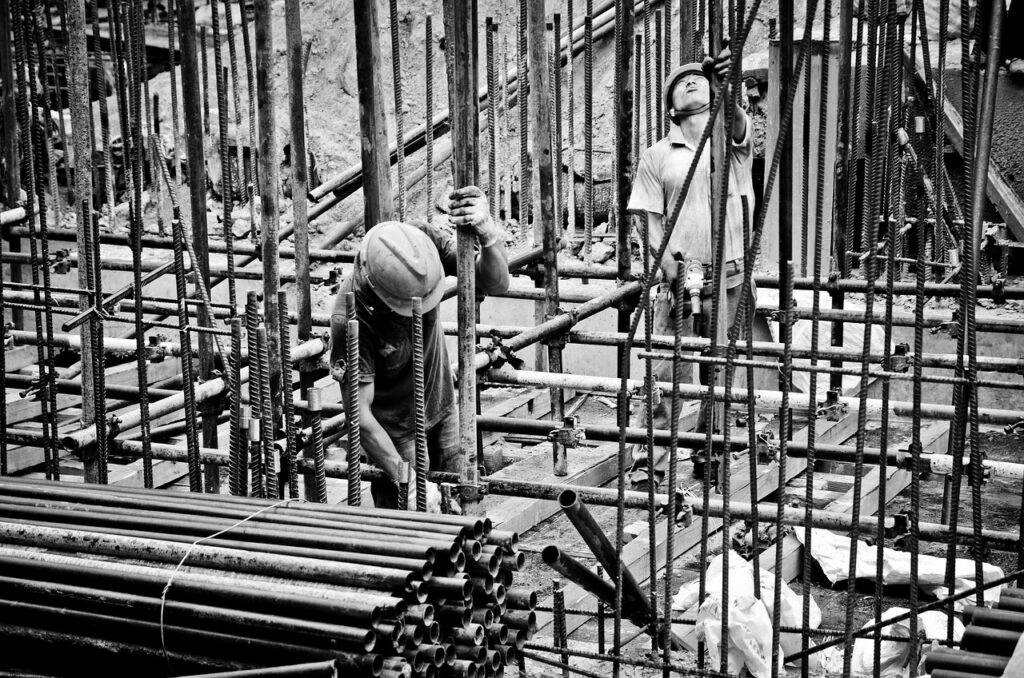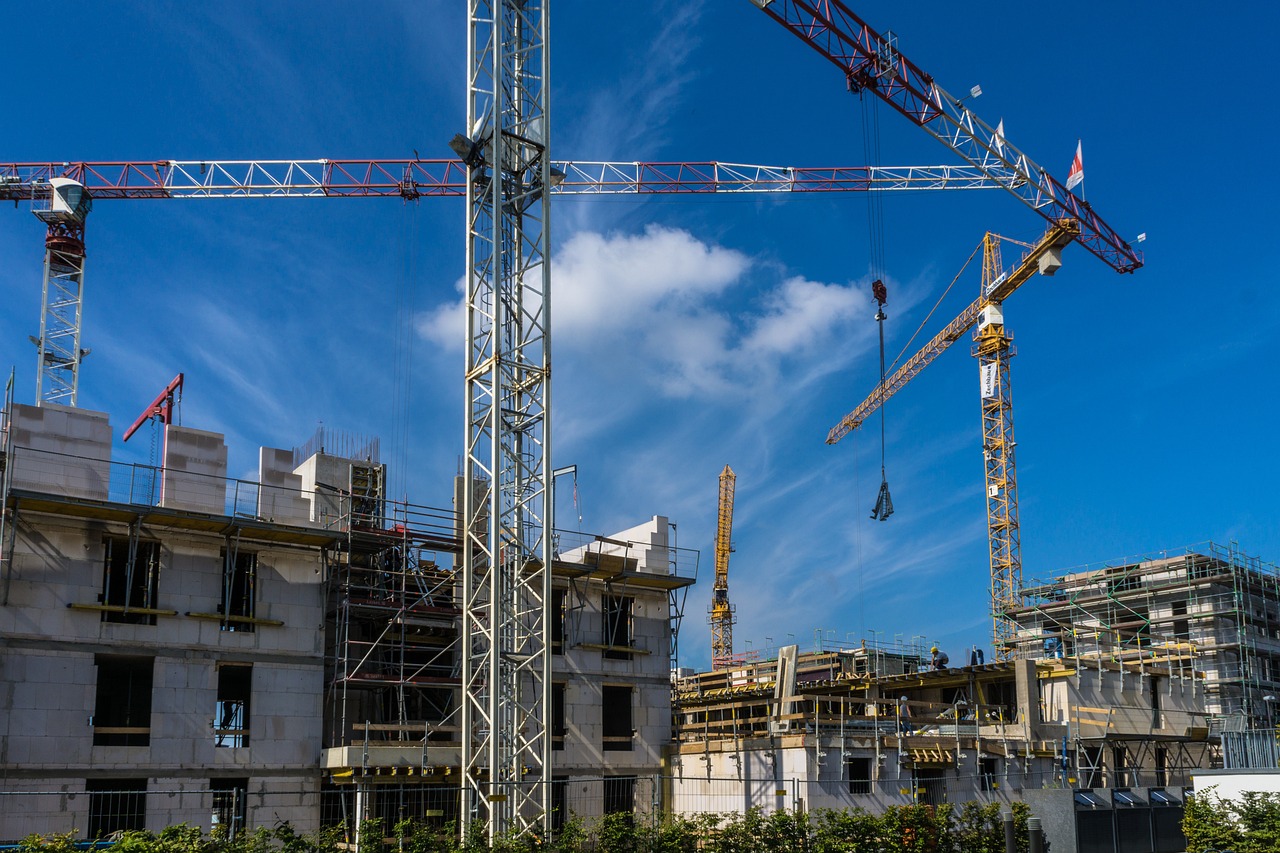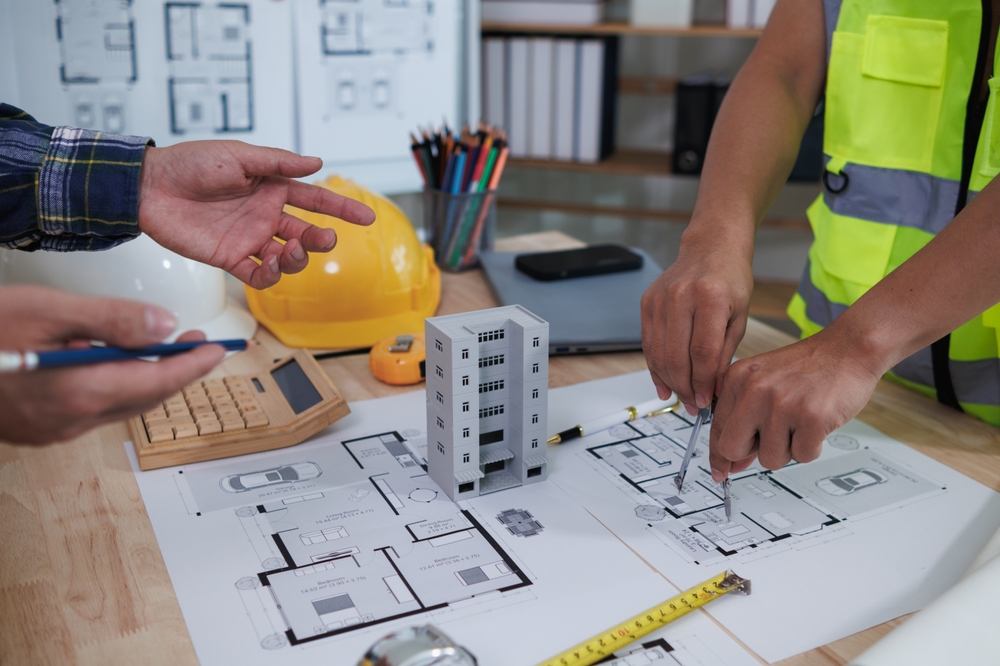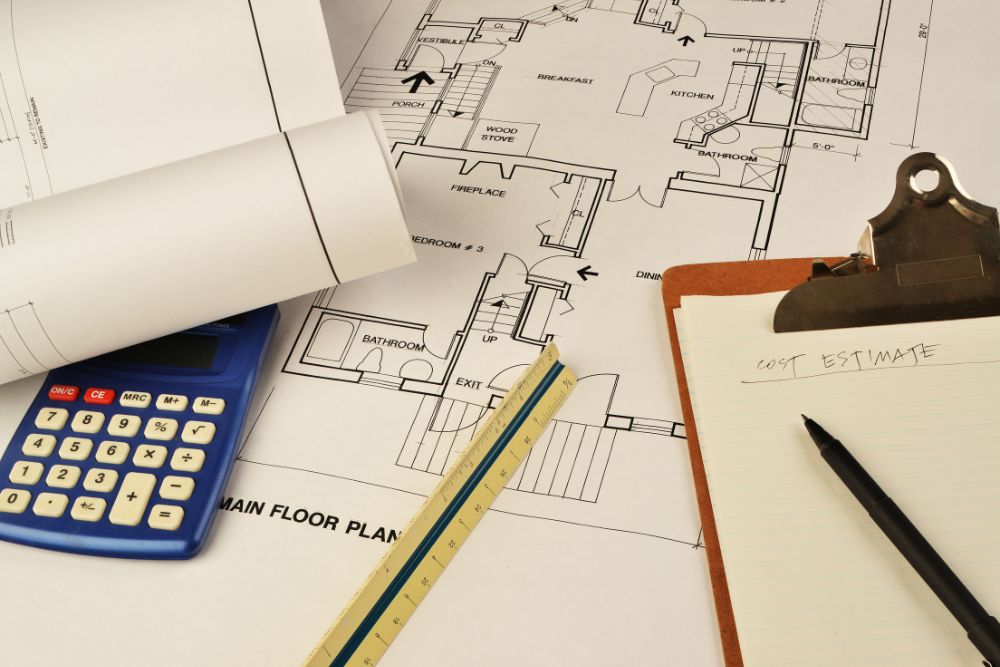Estimating in construction is challenging. It’s like solving a complex math problem. Getting it right is super important because good estimates can decide whether a project succeeds. Did you know that 4 out of 10 contractors are not happy with the estimate they get? This is often because of common construction estimating mistakes.
What are these construction estimating mistakes? How can you avoid them? This blog post will discuss the usual construction estimating errors and give you useful tips to avoid them.
Read on to find out how to improve your estimates and ensure smoother projects.
What Is Estimation in Construction?
Construction estimating is the process of predicting the costs, resources, and time needed to complete a construction project. It involves analyzing project plans, specifications, and other relevant details to calculate the overall financial requirements.
When estimating, you need to figure out:
- How much materials will cost
- How much to pay workers
- Travel costs
- Taxes
- Any other expenses
All these add up to the final estimate.
Estimating isn’t easy. If you get it wrong, you might:
- Lose out on jobs
- Make less money than expected
- Or, in the worst case, lose money on the project
Small mistakes happen, and that’s okay. But it’s important not to repeat the same construction errors, as this can really hurt your construction business.
Common Construction Estimating Mistakes
Let’s discuss the 12 common construction estimating mistakes and provide insights on how to avoid them.

Not Conducting a Site Visit
The most fundamental mistake that contractors make while estimating construction costs is not visiting the site. A site visit is an efficient and informative way of collecting first-hand data that can greatly affect the accuracy of an estimate.
During a site visit, estimators can:
- Assess the terrain and identify potential challenges
- Evaluate access to equipment and materials
- Determine the need for special equipment or techniques
- Identify potential environmental concerns
If this step is omitted, estimators may overlook factors that may cause additional expenses and unaccounted-for time. For example, learning that there is poor ground stability or that land needs extensive preparations before construction begins when the project is already underway may lead to cost increases.
To avoid this mistake:
- Make site visits a mandatory part of the estimating process
- Use a standardized checklist to ensure all relevant aspects are considered
- Take detailed notes and photographs for future reference
- If possible, bring key team members to get multiple perspectives
Remember, the time and resources invested in a thorough site visit can save substantial costs and headaches.
Inaccurate Quantity Takeoffs
Quantity takeoffs are the most basic and core of all construction estimating processes. They consist of estimating and quantifying the amounts of materials and manpower needed in a particular project. Inaccuracies can propagate throughout the entire estimate, with differing degrees of impact across the various components.
Common errors in quantity takeoffs include:
- Misreading plans or specifications
- Using incorrect units of measurement
- Failing to account for waste or overage
- Overlooking small but crucial items
These errors result in undercoating or overcasting a specific project, which poses a great threat to the construction firm’s overall success.
To improve the accuracy of quantity takeoffs:
- Use digital takeoff software to reduce human error
- Implement a double-check system where another estimator reviews the takeoff
- Develop and use standardized templates for different types of projects
- Regularly update material and labor databases to ensure accuracy
Quantities are the backbone of any estimate and, as such, should be taken seriously and dedicatedly through quantity takeoffs.
Ignoring Addenda
Addenda are official changes to the original project documents. Therefore, excluding these updates from the estimate means that the estimate prepared will diverge greatly from the project’s actual cost.
Ignoring addenda can result in:
- Missing crucial changes to the scope of work
- Overlooking updated material specifications
- Failing to account for revised timelines or deadlines
To avoid this mistake:
- Implement a system to track and review all addenda as they are issued
- Assign a team member to be responsible for incorporating addenda into estimates
- Use project management software that allows for easy updates and version control
- Always confirm with the client or project owner that you have the most up-to-date information before submitting a bid
It is important to remember that besides being correct, addenda shows an ability to pay attention to detail to other people, particularly potential employers.
Underestimating Labor Costs
Labor is always a substantial part of construction costs, and if not estimated well, it will affect a project financially in a big way. Several factors can contribute to this common mistake:
- Failing to account for overtime or shift differentials
- Overlooking the need for specialized skills or certifications
- Not considering regional wage differences
- Ignoring the impact of project duration on labor productivity
To more accurately estimate labor costs:
- Regularly update your labor rate database
- Consider the specific skills required for each task
- Factor in potential over time, especially for tight schedules
- Use historical data from similar projects to inform your estimates
- Consider the impact of weather, site conditions, and other factors on productivity
It is important to always consider the fact that labor costs vary with the trends and conditions prevalent in the construction labor market.
Misjudging Materials and Supplies Costs
Accurate material cost estimation is crucial for project success. Common errors in this area include:
- Failing to account for price fluctuations in volatile markets
- Overlooking shipping and handling costs
- Not considering bulk-purchasing discounts
- Underestimating waste and breakage
To improve material cost estimates:
- Maintain relationships with suppliers to get accurate, up-to-date pricing
- Consider using cost-estimating software that includes current material prices
- Factor in potential price increases, especially for long-term projects
- Include a contingency for waste and unexpected material needs
It’s also important to consider the timing of material purchases. In some situations, it may be advantageous to purchase materials before they are needed; in others, purchasing only as needs dictate can save money.
Failing to Assess Risks and Create Contingencies
It is a well-known fact that such construction projects are high risk, and the performance of risk assessment is critically important in order to avoid much higher costs. Common risks that are often overlooked include:
- Weather delays
- Unforeseen site conditions
- Regulatory changes
- Supply chain disruptions
To better manage risks:
- Conduct a thorough risk assessment for each project
- Use historical data to inform potential risk factors
- Include appropriate contingencies in your estimates
- Consider using Monte Carlo simulations for complex projects to model various risk scenarios
Remember, while contingencies may increase your initial estimate, they can protect your profitability in the long run.
Taking Shortcuts
Due to time pressures, there is often a tendency to cut corners when preparing estimates. However, such time-saving measures sometimes lead to expensive construction estimating mistakes.
- Using outdated pricing information
- Copying and pasting from previous estimates without proper review
- Relying too heavily on rules of thumb or ballpark figures
- Skipping detailed breakdowns for smaller line items
To avoid the pitfalls of shortcuts:
- Develop and follow a standardized estimating process
- Allocate sufficient time for each estimate
- Use estimating software to streamline the process without sacrificing accuracy
- Regularly review and update your estimating practices
Remember, a thorough estimate takes time, but an investment pays off in more accurate bids and more profitable projects.
Poor Communication with Dealers and Subcontractors
Effective communication with suppliers and subcontractors is crucial for accurate estimating. Construction estimating mistakes can lead to:
- Inaccurate pricing information
- Misunderstandings about the scope of work
- Missed opportunities for cost savings
To improve communication:
- Develop strong relationships with key suppliers and subcontractors
- Provide clear, detailed information when requesting quotes
- Follow up on quotes to ensure all details are understood
- Consider using collaborative estimating software to streamline communication
Remember, your suppliers and subcontractors can be valuable sources of information about market trends and potential cost-saving opportunities.
Unprofessional Bids
While the accuracy of the numbers is crucial, the presentation of your estimate also matters. Unprofessional bids can undermine client confidence and may even lead to lost opportunities. Common issues include:
- Poorly organized or difficult-to-read documents
- Lack of detail or explanation
- Spelling and grammatical errors
- Inconsistent formatting
To create more professional bids:
- Develop standardized templates for different types of projects
- Include clear breakdowns of costs and explanations of your methodology
- Have someone proofread your bids before submission
- Consider using professional estimating software that includes reporting features
A well-presented bid increases your chances of winning the project and sets the tone for a professional relationship with the client.
Time Mismanagement
Poor time management during estimating can lead to rushed work and inaccurate results. Common time management mistakes include:
- Underestimating the time required for thorough estimating
- Failing to prioritize estimates based on project potential
- Not allocating enough time for review and quality control
To improve time management:
- Develop a realistic timeline for each estimate
- Use project management tools to track progress and deadlines
- Break down the estimating process into manageable tasks
- Consider delegating certain aspects of the estimate to team members
Remember, while speed is important in competitive bidding, accuracy should never be sacrificed for the sake of time.
Inaccurate or Confusing Designs and Specifications
Sometimes, the root of estimating errors lies in the project documents themselves. Inaccurate or confusing designs and specifications can lead to:
- Misinterpretation of project requirements
- Overlooked elements of the project
- Conflicts between different parts of the documentation
To mitigate these issues:
- Carefully review all project documents before beginning the estimate
- Seek clarification from the client or architect on any ambiguous points
- Document any assumptions made during the estimating process
- Consider using Building Information Modeling (BIM) for complex projects to visualize better and understand the design
Clear communication with the design team can help resolve many of these issues before they impact your estimate.
Not Updating Data with Market Trends
The construction industry is dynamic, with prices and practices constantly evolving. Failing to keep up with market trends can lead to outdated and inaccurate estimates. Common oversights include:
- Using outdated price-lists
- Failing to account for new technologies or methods
- Overlooking changes in regulations or building codes
To stay current:
- Regularly update your estimating databases
- Attend industry conferences and workshops
- Subscribe to relevant trade publications
- Network with other professionals in the field
Remember, staying informed about market trends improves your estimates and gives you a competitive edge in identifying cost-saving opportunities.

Why Accurate Estimating Matters
Construction estimating involves identifying resources and time that may be required in a particular construction project. It is much more than simply manipulating figures—it is about anticipating difficult situations and finding ways to cut costs before they emerge.
When done right, good estimating helps in several important ways:
- Better Cost Control: Accurate estimates help project managers use money wisely, putting it where it’s needed most.
- On-Time Finish: Accurate estimates ensure that projects finish on time and do not incur additional costs due to delayed completion.
- Happy Clients: Meeting budget and time goals keeps clients satisfied and helps build a good reputation.
- Making Money: Accurate estimates protect profits, stopping financial losses that could hurt a construction company.
FAQs
What are the common mistakes made when estimating in construction?
Some blunders include no or few site visits, wrong estimation of quantities, no update, wrong assumption of labor cost, and wrong assessment of material. These problems may lead to budget problems and delays.
How can I make my construction estimates more accurate?
Use advanced estimating software, visit the site, keep material prices up-to-date, communicate well with all parties, and assess risks thoroughly. These steps help you create more accurate estimates.
Why should I include contingencies in construction estimates?
Contingencies act as a financial cushion for unexpected issues during construction. They help keep the project on budget despite surprises.
How does construction estimating software help avoid mistakes?
Estimating software improves accuracy by automating calculations, managing data, and providing current pricing. It also helps create detailed estimates, reducing errors.
What should I do if designs or specifications are unclear?
Ask architects or engineers for clarification to ensure you understand the project fully before finalizing your estimate. This prevents construction estimation mistakes and inaccuracies.
Conclusion
Estimating is a vital aspect of construction, and hence, it must be done accurately. By avoiding the previously discussed construction estimating mistakes and adapting state-of-the-art technologies, estimators can achieve better results. Estimating isn’t just about numbers—it’s about clear planning and adapting to changes. Staying precise and updated benefits both companies and clients.
To avoid these common estimating mistakes and achieve more accurate results, consider partnering with Prime Estimation. Contact us today to get our construction cost estimating services that make sure your next project runs smoothly and stays on budget!











